GoPro Hero 7 Black Review
GoPro Hero 7 Black Review
The Hero your holiday deserves?
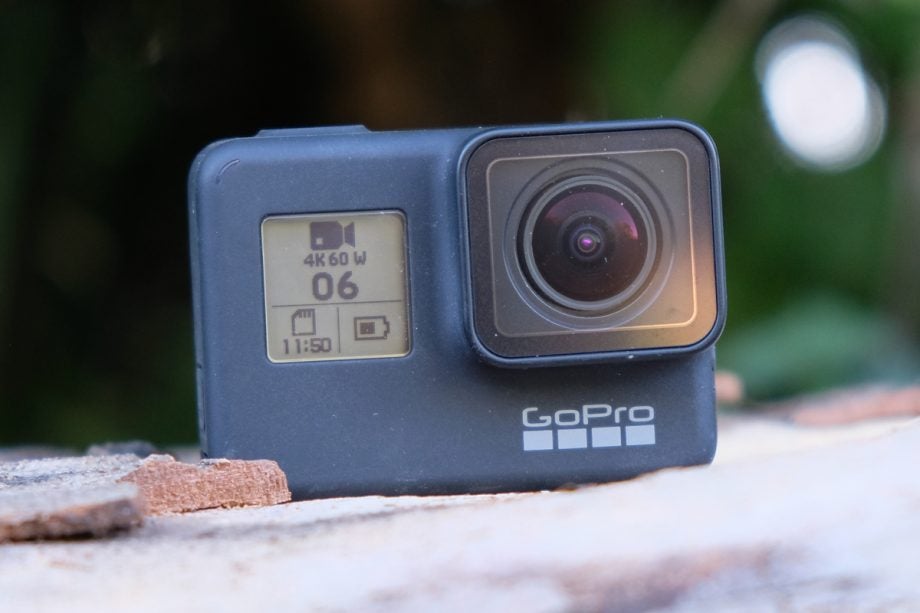
Verdict
It's only a relatively small step forward from its predecessor, but the Hero 7 Black's excellent video quality, stabilisation, usability and range of mounts make it the best all-round action cam you can buy.
Pros
- Superb image stabilisation
- Improved audio quality
- Impressive video and decent stills
- Waterproof without needing a case
- Huge range of mounts and accessories
- Now offers livestreaming
Cons
- Can get very hot when recording 4K
- Occasionally sluggish or unresponsive UI
- Still relatively expensive
Key Specifications
- Review Price: £379
- Shoots 4K/60fps; 1080p/240fps video
- Waterproof to 10m
- Takes 12-megapixel still photos with HDR
- Offers livestreaming via smartphones
- Timelapse and slo-mo modes
Editor’s note (1/10/19): GoPro has released the new Hero 8 Black, which is the successor to this action camera. To see our verdict on that new flagship, check out our full GoPro Hero 8 Black review. Or to see how it compares with this one, read our GoPro Hero 8 Black vs Hero 7 Black comparison.
The GoPro Hero 7 Black will remain on sale as part of GoPro’s 2019 lineup – it remains a great action camera at its new £319 price, so read on to find out why…
What is the GoPro Hero 7 Black?
The GoPro Hero 7 Black is a pocketable, waterproof 4K camera with class-leading electronic image stabilisation and a huge range of mounting accessories.
This isn’t the latest action camera in the series though, as GoPro has since launched the GoPro Hero 8. But since the latter costs a lot more cash, the GoPro Hero 7 may well retain the accolade as our top recommended option.
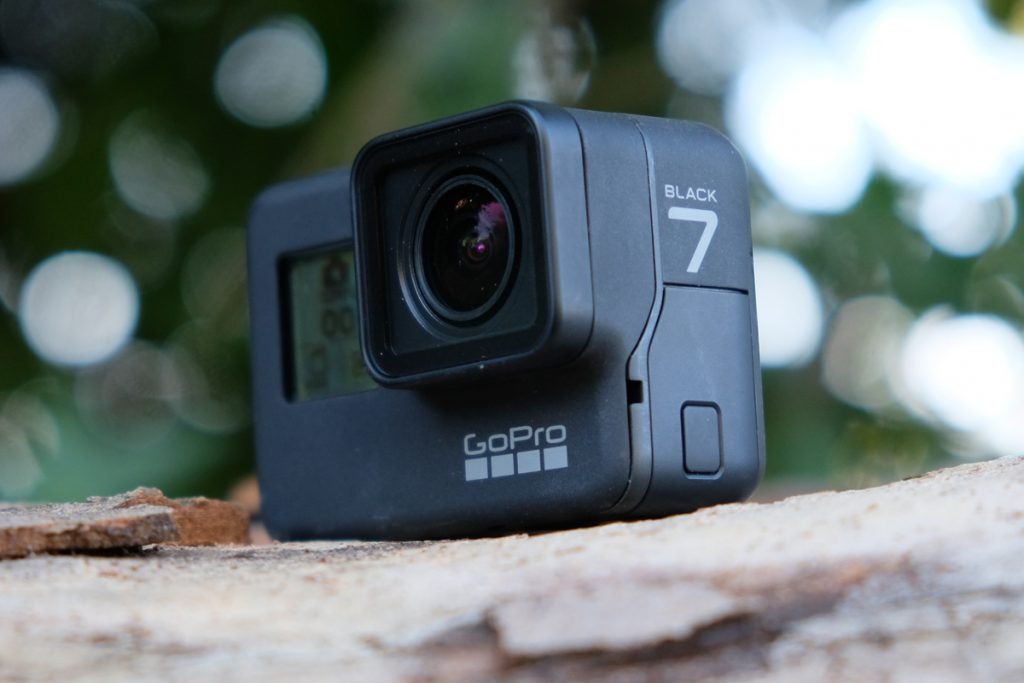
Design, controls and screen
The Hero 7 Black will look very familiar to anyone who’s used the previous two flagship Hero models – perhaps too familiar, if you were hoping for a redesign.
Still, at least GoPro has changed the colour this time, from the traditional grey to black for this flagship model. The only other major hardware change is a redesigned microphone membrane, which GoPro’s tweaked to improve overall sound quality (more on that later) and reduce vibration sounds from bone-shaking moments like mountain biking.
Otherwise, it’s business as usual, with a rubberised (if slightly less grippy) finish and waterproofing down to ten metres. There’s a two-inch touchscreen on the back, which has a slightly yellowy cast compared to the Hero 6’s display, but is otherwise bright and sharp enough for quick previews of your shots. And on the sides you’ll find the usual, occasionally frustrating buttons for starting recordings and turning it on or off.
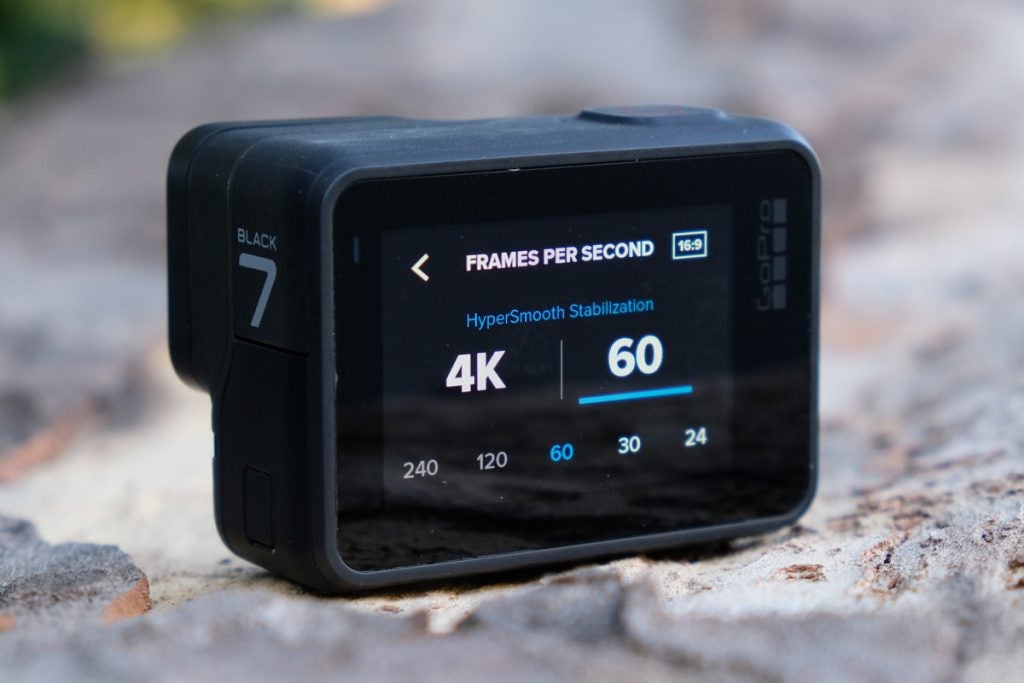
If the hardware is reassuringly familiar (or disappointingly unchanged, depending on your previous experience), there have at least been some tweaks to the Hero 7 Black’s software menus.
I’m a little in two minds about these changes. There are definite improvements: the new ‘short clips’ button, which lets you limit recordings to 15 or 30 seconds, is handy if you want to hand your GoPro to someone else without worrying that it’ll come back with a memory card full of accidental rucksack shots. And the move to combine all video options, including ‘field of view’ and Protune manual controls, in one menu means it’s now much easier to quickly fine-tune your settings and get creative.
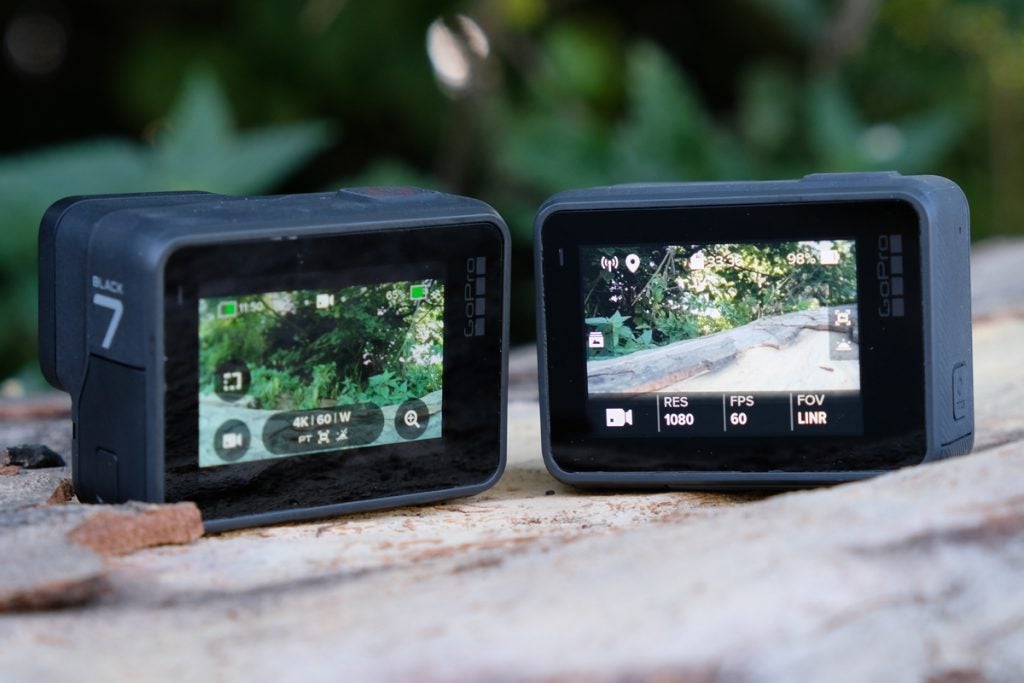
On the downside, I found the separate, black settings bar menu to be a little clearer on the Hero 6 (above right). And there are still some irksome usability issues: the Hero 7 Black sometimes freezes when you’re scrubbing through footage, and it’s a little too keen to flip into portrait mode (although you can at least lock it to stay in landscape).
Overall, the GoPro user experience is still a bit of an opinion splitter – I found it largely fine and a vast improvement over earlier GoPros, while our video producer felt the touchscreen controls sometimes bordered on infuriating.
The reality is that a camera this small will always present some usability issues – and the Hero 7 Black is still much easier to use than most other action cameras we’ve tested.
As on the Hero 6 Black, there are also voice controls like “GoPro, start recording” for hands-free control. Although these work relatively reliable, I was still inclined to use them as a backup to the relative safety of a real button.
Features and performance
The big new feature on the Hero 7 Black is what GoPro calls Hypersmooth. This is a boosted version of the already excellent electronic image stabilisation (EIS) we saw on the Hero 6 Black and, unlike its predecessor, it now works during the top whack 4K/60fps recording. GoPro says it’s now effectively a virtual equivalent of its Karma Grip. Big claims indeed.
Before we delve into Hypersmooth, there are four other improvements compared to the Hero 6 Black. ‘TimeWarp’ is a fancy new timelapse mode that uses the Hero 7’s boosted stabilisation to shoot what GoPro calls a first-person “magic carpet ride”. A new stills feature called SuperPhoto acts as a kind of ‘super-auto’ mode, changing your settings based on the scene. The camera’s microphone has been redesigned to improve the audio. And, lastly, the Hero 7 Black can livestream via your smartphone, initially to Facebook but soon to other sites like YouTube.
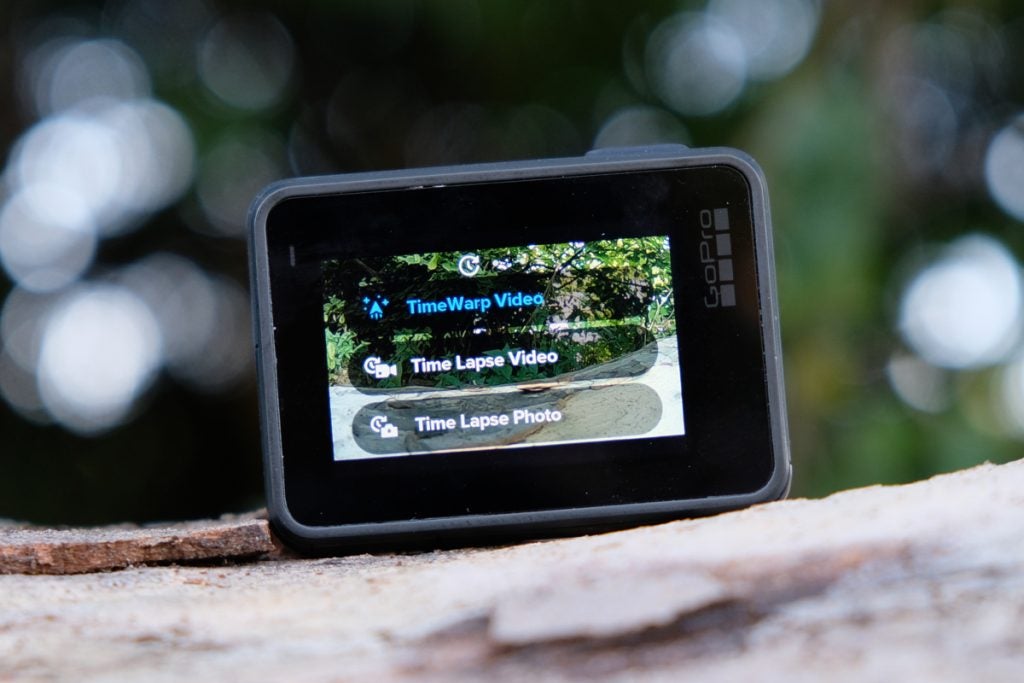
So how well do all of these new toys work? Let’s start with that modestly named stabilisation, Hypersmooth.
Unlike Sony’s FDR-X3000, there’s no optical stabilisation behind Hypersmooth – it’s all done electronically. It works by cropping your image by five per cent, which means you lose the edges of your shot, with the benefit being that the camera then has the wiggle room to counter any shakes or vibrations that are sensed by its giro.
GoPro was a little coy on exactly how Hypersmooth differs from the Hero 6 Black’s stabilisation, beyond saying that it’s added a little more memory to the Hero 7 Black and has now fully harnessed the power of its GP1 processor. But what is clear is that in some situations, mainly handheld shots, it’s a definite improvement.
I went running down the same pathway with the Hero 7 Black, a Hero 6 Black and a GoPro Karma Grip. You can see the results below. While the Karma Grip still wins out for smoothness, it’s not that far ahead of the Hero 7 Black, which gives you some gimbal-like nice pans when turning corners and certainly beats the already impressive Hero 6 Black. It’s really impressive and easily the best electronic video stabilisation you’ll find on an action camera.
[videoai]Not that Hypersmooth is completely infallible. While it’s great if you mostly shoot handheld footage, it isn’t able to nullify all shake. When we took the Hero 7 Black and Hero 6 Black on a ride around a Go Karting track (with admittedly very tough, gloomy lighting and pre-release firmware), there were still plenty of vibrations in the footage and it was hard to tell the two cameras apart.
One thing GoPro does say it’s completely solved on the Hero 7 Black, though, is rolling shutter, which is the jello-like effect you can sometimes see in fast-moving objects. So far in our test footage we haven’t seen any major signs of it, so that’s another bonus over some of GoPro’s earlier Hero cameras.
Timelapse, audio and livestreaming
So what about the Hero 7 Black’s other new features? It might not be a brand new idea, but TimeWarp is a fun new timelapse shooting mode that’s been executed very well.
Normal timelapse videos usually work best when the camera is static with all the motion is happening around it, because footage can otherwise get a bit jerky. But TimeWarp’s smoothness means it’s a very nice option for capturing and sharing sped up, first-person journeys like bike rides. Expect to see them popping up on your Instagram feed soon.
[videoai]Those changes to the microphone have borne fruit too. I clipped a Hero 7 Black and Hero 6 Black to my guitar you can clearly hear the difference – the bass is beefier and the mids are much clearer. It’s now a solid option for vlogging or homemade YouTube videos, particularly when combined with the ‘linear’ field of view (which removes the traditional fisheye barrel distortion), although this mode still isn’t available in 4K recording. The dual microphones still do a decent job of reducing wind noise on bike rides too.
[videoai]If you’re recording something more challenging like a live gig and want top notch sound then you’ll probably still want to use an external directional mic like a Rode Videomicro, which plugs into the USB-C port via a 3.5mm adaptor. But overall the Hero 7 Black’s built-in audio quality is a big bonus over the Hero 6 Black.
Lastly, there’s the new live-streaming feature. On the couple of occasions I’ve tried this on Facebook it’s worked well. You set it up in the GoPro app, which lets you choose who to share your livestream with (public, friends or ‘only me’) and the resolution (720p or 480p).
Once you’ve given your stream a name, you’ll need to either connect to a Wi-Fi network or use your phone’s data connection in ‘personal hotspot’ mode. So far I’ve only tested it on office Wi-Fi, so if you’re out in the wilds (a GoPro’s natural habitat) then there’s always a chance your network signal won’t be strong to support streaming. I’ll give this feature more of a test in those conditions and update this review when I have.
Video and image quality
Straight from the camera, the Hero 7 Black’s video quality is excellent. Is it noticeably better than the Hero 6 Black? No, there’s very little difference in dynamic range and colour, because it uses the same processor, lens and sensor size. And, as GoPro told me, its main focus was on improving video stabilisation. So if you’re wondering whether to upgrade from the Hero 6 Black, then video quality alone isn’t a reason to do so.
In some scenes, the footage looks a little ‘warmer’ than its predecessor, but otherwise it has the same rich colours in good light and a surprising ability to handle gloomy outdoor conditions without descending into the noise or smudginess that’s often the case with 1/2.3-inch sensor cameras. Indoor low light presents more of a problem, but I shot a lot of outdoor videos during dusk and was impressed with the results.
[videoai]To really squeeze the most out of the Hero 7 Black, you’ll want to use the ‘Protune’ mode, which boosts video bit-rates and lets you tweak settings like ISO ranges, sharpness and exposure compensation. This also lets you choose between GoPro’s colour correction or a ‘flat’ profile that lets you grade the footage afterwards in the likes of Adobe Premiere Pro.
But if you don’t want to faff about with editing, then the ‘out of camera’ footage will be absolutely fine for most non-professional needs.
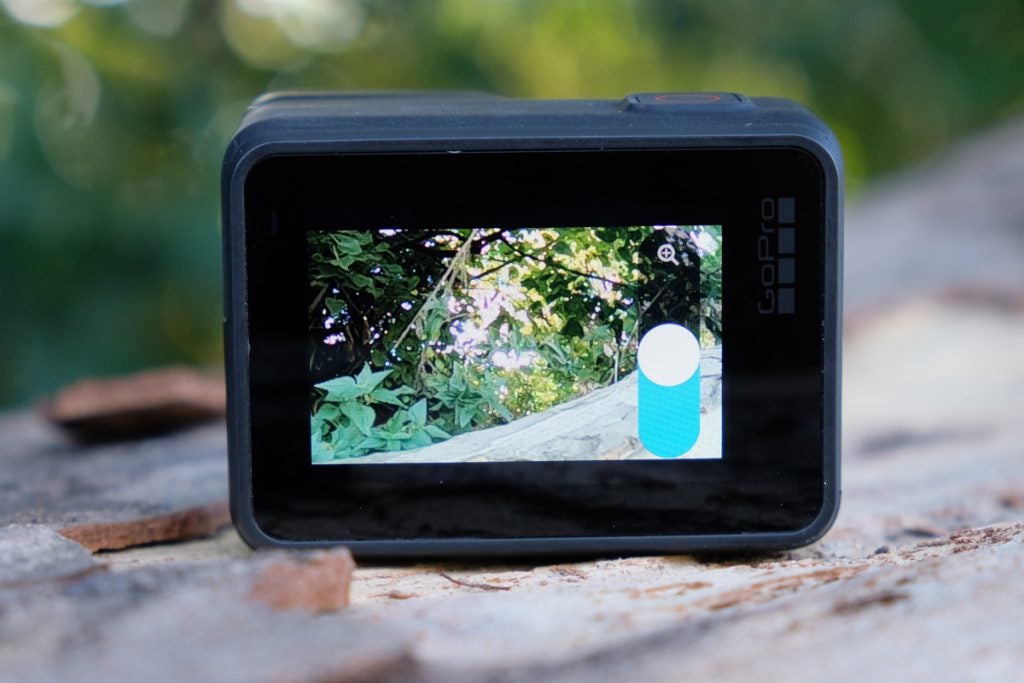
Having Hypersmooth stabilisation on the max 4K/60fps setting is a boon, but there are a couple of restrictions to bear in mind. Firstly, the ‘linear’ field of view still isn’t available in 4K recording, so you’ll have to shoot with the classic ‘fisheye’ look. And if you’re shooting extended clips in this mode, the Hero 7 Black does get very hot – in fact, mine started shutting down due to excessive heat after about 35 minutes. So it’s very much something to reserve for short clips.
Probably more useful are the Hero 7 Black’s slo-mo modes. You can shoot at 120fps in anything up to 2.7K resolution, or 240fps in up to 1080p. You do need quite a bit of light to get the best results – in gloomier settings some of our clips had an odd strobing effect – but in daylight you can get some really great slo-mo footage of swimmers gliding past or mountain bikers carving through puddles. Not significantly better than your smartphone, admittedly, but then the waterproof Hero 7 Black is happy to shoot from some more extreme angles and places.
And what about still photos, is the Hero 7 Black a match for your smartphone here too? GoPro reckons it’s built automatic detection of faces, smiles and scenes into its new flagship in the form of ‘SuperPhoto’. These new smarts will apparently then help it both automatically change settings like white balance and also pick the right shots for QuikStories, which is an automatic editing feature of GoPro’s Quik app.

So far, I haven’t seen too much of a change to my photos with ‘Superphoto’ turned on compared to the Hero 6 Black. It’s early days but it’s not yet at the level of something like, for example, the Huawei P20 Pro’s ‘Master A.I’ mode yet. Still, the 12-megapixel photos are perfectly decent in good light, particularly if you use the HDR mode.
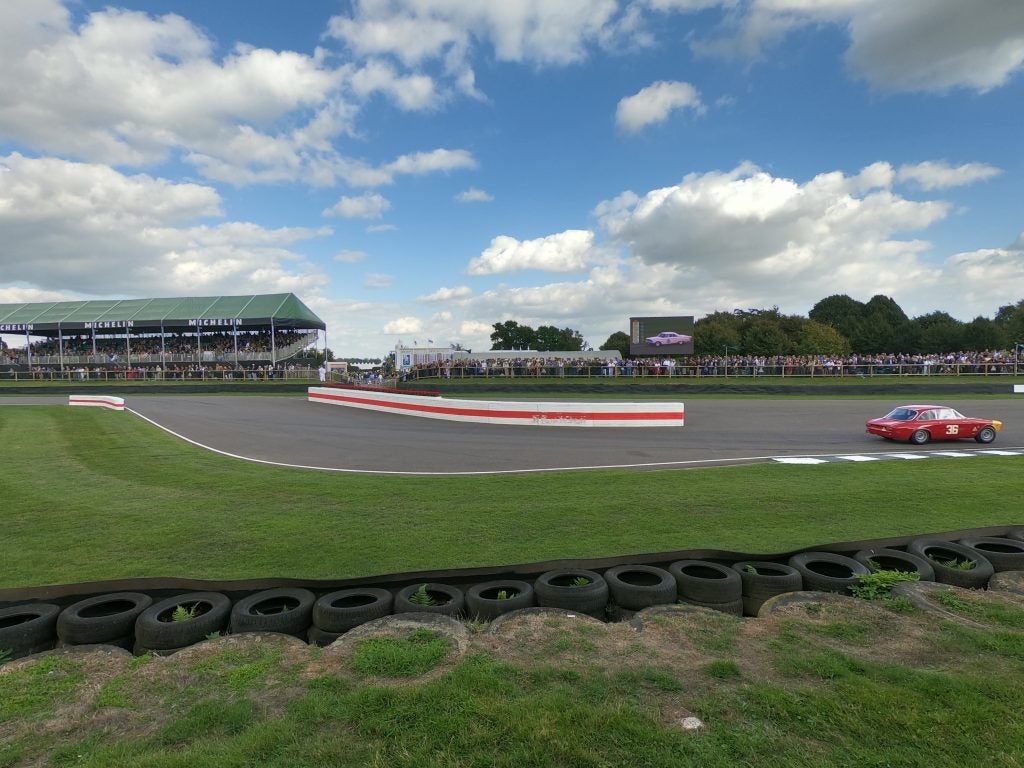
The Hero 7 Black is perhaps more of a backup than a rival for smartphones when it comes to stills, but it’s a solid, waterproof travel camera for those who don’t want to lug around something bigger.
Battery life
One of the slight downsides of the Hero 7 Black’s size, though, is that it can only pack in a relatively small battery. It has less than half the capacity of an Apple iPhone XS’s battery, for example.
In reality, this means you’ll get around 1hr 45mins of continuous video at 1080p/30fps, which is about par for an action camera. It’s most restrictive when it comes to shooting 4K/60fps – I only got 45 minutes of continuous recording in this mode from a charge, although the camera became largely unusable after 35 minutes due to overheating.
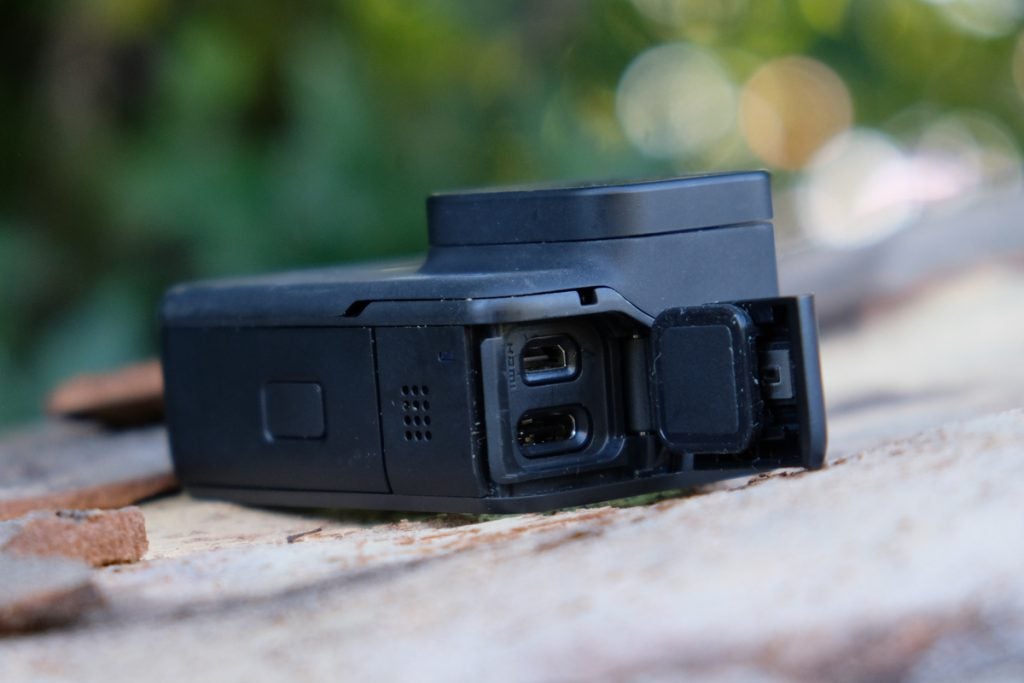
This isn’t unusual and is the main reason why much larger cameras often have 30-minute restrictions to their 4K video recording. But it is something to bear in mind before you start dreaming about shooting all day in Hypersmooth-stabilised 4K.
There are accessories that can help though – the Hero 7 Black charges via USB-C, so if you carry a portable battery pack you can top it up while out in the field (it takes about an hour to recharge). There are also charging cradles like GoPro’s own Dual Battery Charger that can store some freshly charged spares.
Should I buy the GoPro Hero 7 Black?
In this age of super-powerful smartphone cameras and sub-£100 action cams, buying a flagship GoPro might seem like an unnecessary indulgence, if not downright foolish. But the Hero 7 Black shows that there’s definitely still a place for premium action cameras – and it’s the best one so far.
Sure, many of its headline features (electronic image stabilisation, livestreaming, 4K/60fps video, 240fps slo-mo) are available on most flagship smartphones, and it’s only a relatively minor upgrade on the now discontinued Hero 6 Black. But it’s the combination of those skills with the Hero 7 Black’s rugged, waterproof form factor and unmatched range of mounting options that make it a great addition to anyone’s photographic toolkit.
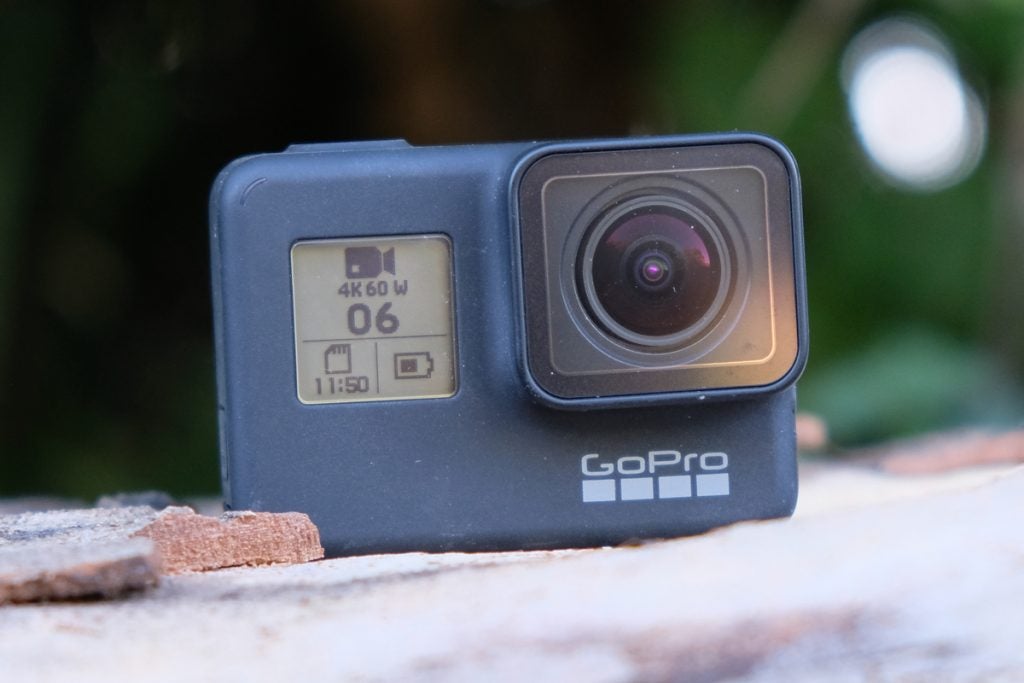
While its touchscreen UI isn’t without its frustrations, the Hero 7 Black is significantly more user-friendly than most budget action cameras and has handy editing options like GoPro’s Quik app for those who don’t want to spend hours rifling through footage. That superb electronic image stabilisation means you’ll have a lot more usable clips too.
The fact that the Hero 7 Black is fully waterproof without the need for a case is another bonus, as is the improved audio quality from its redesigned microphone.
It’s not perfect, of course – it can get very hot when recording continuous 4K footage, to the point where it automatically shuts down. The sensor is also still the same size as before, so it can be a struggle to get usable footage or slo-mo in very low light. And there probably aren’t enough new features for GoPro Hero 6 owners to consider upgrading.
But if you’re looking for a pocketable, waterproof camera that can shoot some excellent video from angles that are beyond your more restrictive (and fragile) smartphone, then the Hero 7 Black is one of the best you can buy.
Verdict
It might only be a relatively small step forward from its predecessor, but the Hero 7 Black’s excellent video quality, stabilisation, usability and range of mounts make it the best all-round action cam you can buy.
The Rivals
Sony FDR-X3000R
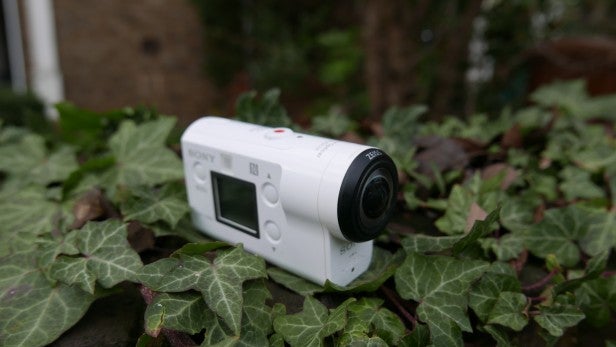
One of the few action cameras that can rival the Hero 7 Black’s image stabilisation, the FDR-X3000R shoots superb 4K video, while its ‘mini camcorder’ design makes it a good choice for travel vloggers. The slightly disappointing Live View display and the need for a bulky case to make it waterproof mean its GoPro rival is a little more suited to action sports, though.
Apeman A80
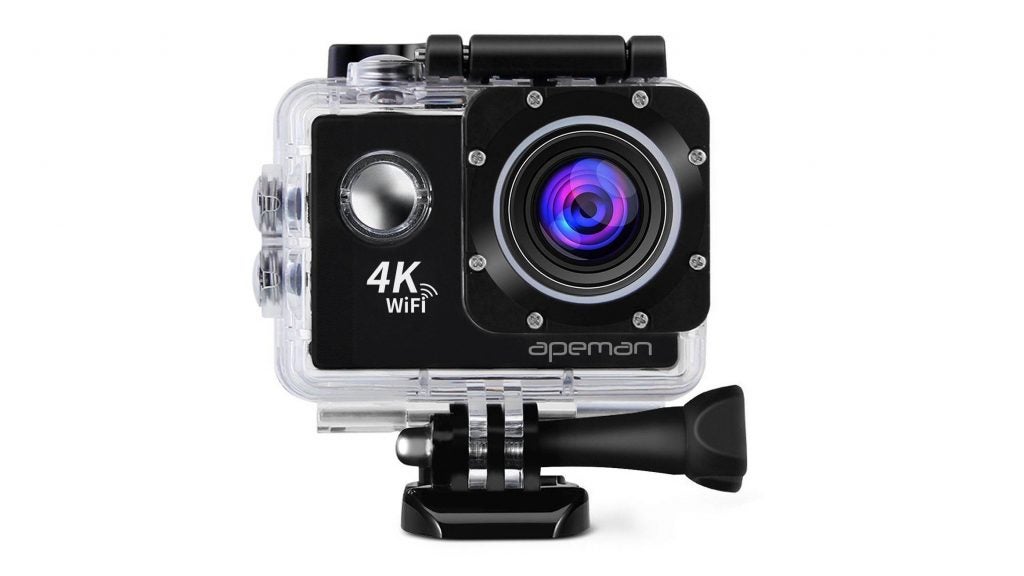
For those looking to dip their toes into action cam waters, the A80 is a decent, sub-£100 option. It doesn’t shoot proper 4K video and the smartphone app doesn’t work particularly well (if at all), but video quality impressively clear and detailed for the incredibly low price tag.
GoPro Hero 8 Black
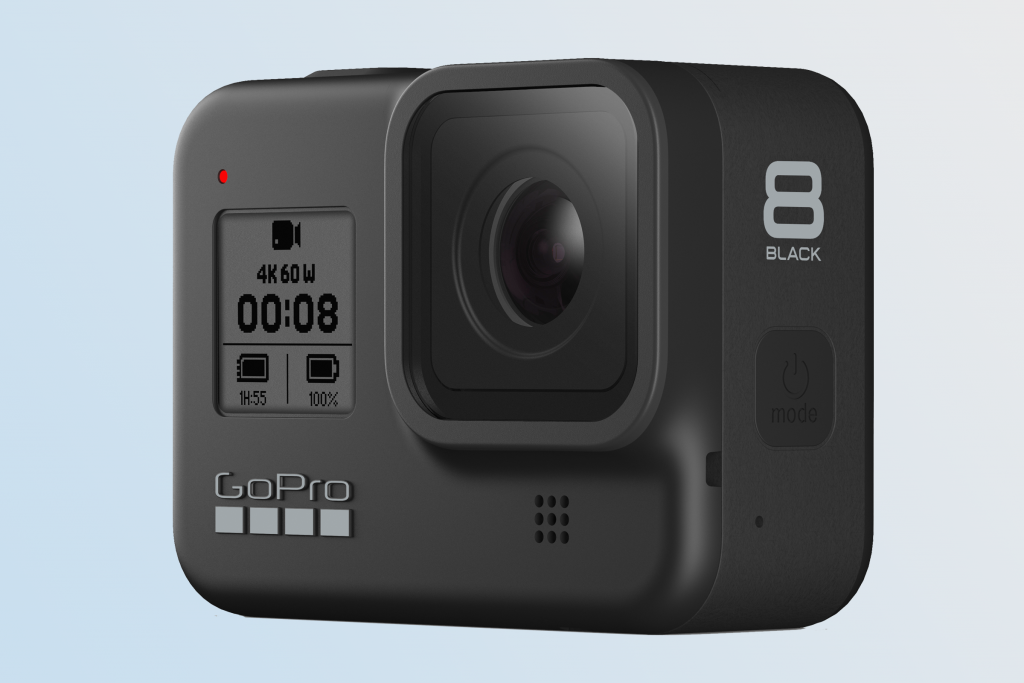
Perhaps the biggest rival to the GoPro Hero 7 Black is the action camera’s own younger sibling: GoPro Hero 8 Black. There’s not a whole lot of massive improvements here, but it does feature compatibility with upcoming mods that allow the use of accessories such as a shotgun microphone and waterproof LED light. Sadly, these accessories won’t be available until 2020.


